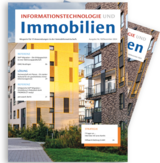Working from home is passé... the new trend is working on the move

Workstations at home have always existed. Gerhart Hauptmann described the social dislocations of this as early as the late eighteenth century in his drama “The Weavers”. It is thus not a new topic. The difference is that, historically, working from home was primarily order-related and organised in terms of trades, rather than being self-determined and team-based.
The more working from home became aligned with the use of computers, the more it transformed into home-based teleworking, which is also now a thing of the past already.
Your favourite radio station is on, the sun is shining on the laptop on your desk. In the background, the washing machine hums. You can take the washing out on your lunch break. By that time, the Excel table will have been analysed and e-mailed to your boss. This is how we picture efficient working. There is no need to travel to the office to make up your hours – instead, you can get started right away at home.
What are the benefits of working from home?
“Home office” has become a buzzword because family, household and career are now better interlinked. However, this does not mean that the interests of the employee are the crucial factor. Of course, people have more freedom at home than in the office. Nonetheless, collaboration strategies are agreed with the employer as well as fixed working hours and times at which the employee must be present, which means that, during these periods, there is no time for household or family-related tasks or distractions. Family and friends, in particular, will not understand this at first. After all, you are at home and available for everyone to contact.
Many employees also appreciate working from home because it afford them greater flexibility when agreeing their working hours, so that they can combine family and working life better. For instance, employees can organise childcare or care of relatives more easily and thus meet their own personal work–life balance needs with less effort.
In addition, joint problem solving with colleagues can take place at any time. Employees’ skills can be drawn on in situations that would otherwise not be available outside standard working hours, which trade unions in particular are critical of.
Studies have revealed that employees working from home save up to ten hours per week in which they are not stuck in traffic, or on the bus or train – not to mention the positive effects on the environment and their tempers. A further study by Stanford University1 showed that, when comparing working hours in the office and at home, the measurable performance of employees who work from home is around 13 percent higher. Their net working time was more productive because they took fewer long breaks, were ill less frequently and their working environments were quieter with fewer interruptions.
If you do it, do it right!
Labour market forecasts expect this phenomenon to grow because the cross-regional networking of all workplaces within a company, no matter where they are located, allow easier access to data and processes.
It is essential to clarify who is to provide the equipment for working from home. Will the employer provide employees with a company laptop, or do employees have to use their own computer? Is a private device even suitable? And who will pay for the Internet access and phone bill? Furthermore, data protection and general liability must be clarified between the employee, employer and customer. Ultimately, and there is no doubt about this today, working from home is far more productive than working at the office. And irritating colleagues and unmanageable conferences are not sorely missed either.
From working from home to working on the move
Since up to 35 percent2 of workstations are unused on a daily basis due to employee absences, working from home can also be combined with office or desk sharing. For employers, this results in considerable savings with regard to office space and energy consumption. However, only on the condition that the number of workplaces is actually adjusted in line with requirements and employees are prepared to accept a desk in the back office of the company, depending on availability, and without allocation to a specific room. This development can be seen in large and small companies. However, even new companies and startups want to save costs and thus perform the necessary administration from their home environment at the start.
This form of flexible working is increasingly transforming spatial and time boundaries, as the Internet, networks, web-based services and cloud computing now define the modern workplace, and this is no longer purely related to working in a home office.
A smartphone and a tablet – this is the extent of the “office” that employees need to perform their jobs today. They check their e-mails, make calls to customers or work on the latest project from their desk at home, sitting on the couch, in a café – really, from any location while on the move. Employees always have their office with them. They can perform their job where ever they are, because they can always go online securely and conveniently if they have the right company software. Internet-based forms of communication make this possible because a laptop or a mobile device such as a tablet can establish a connection to the Internet. Work and business processes are programmed on the company side so that projects can be moved online without any restrictions.
A temporary desk
Nonetheless, with this mobility, the need for temporary workstations where employees must be present is also increasing. Coworking is the name of this entirely new form of working. Coworking spaces provide workstations and infrastructure (e.g. network, printer, scanner, fax, phone, projector or conference rooms) on a temporary basis, and thus allow conventional discussions or necessary conferences for any company in cases where face-to-face communication is likely to be more successful than online contact. This could be used to supplement the stationary workstations, which the company would then not need to provide in full.
Now everything is on the move ... the office has become mobile.
- Untersuchung an der Stanford University, geleitet durch Nicholas Bloom (2013): „Does working from home work? Evidence from a chinese experiment“. https://people.stanford.edu/nbloom/sites/default/files/wfh.pdf
- Befragung von rund 1.500 Berufstätigen im Auftrag von Team Viewer (2012). http://www.menschundbuero.de/branche/news/jeder-dritte-im-home-office/
Author:

Ernst Hubert von Michaelis
Sales Representative
PROMOS consult
Other articles by this author:
- Article "The future of urban planning – the sponge city"
- Article "Urban Mobility – networked transport for the future"
- Article "We need to create additional housing – but how?"
- Article "The metropolis of the future – a discussion article"
- Article "Co-working – Find a workspace and network at the click of a mouse"
- Article "Less is more – an alternative way of living"
- Article "Micro living – the future of living as a new asset class"
- Article "The digitisation of retail – in-store, online, mobile... Wasted opportunities or risks?"
- Article "Accounting for leasing relationships in accordance with the IFRS 16 standard with low administrative expense"
- Article "Working from home is passé... the new trend is working on the move"
- Article "All that is possible with individual mobility"


